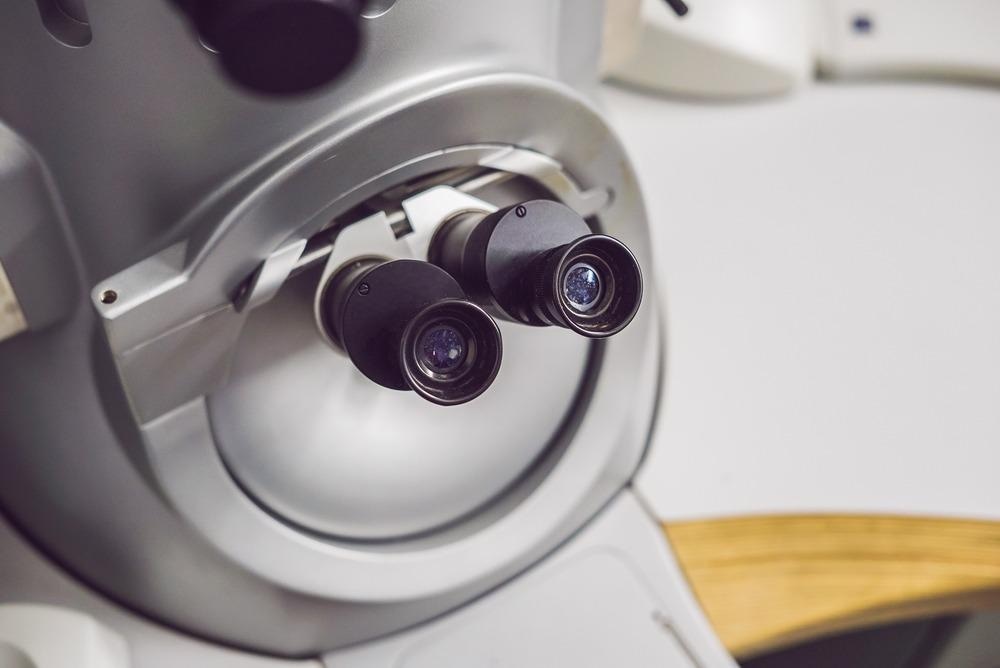In a study published in the journal ACS Nano, the use of electron (e-) beam assisted rapid localized heating and cooling inside a transmission electron microscope to investigate the stage evolution dynamics in binary nanoparticles (NPs) was discussed.

Study: Revealing the Phase Segregation and Evolution Dynamics in Binary Nanoalloys via Electron Beam-Assisted Ultrafast Heating and Cooling. Image Credit: Elizaveta Galitckaia/Shutterstock.com
What are Gas-Phased Nanoparticles?
The ultraclean interfaces of gas-phase produced binary nanoparticles (NPs) facilitate a variety of applications in sensors and enzymes. Nevertheless, accurate control of their structure and characteristics remains a significant difficulty due to the complexity of the developmental process and phase progression processes in these nanoparticles.
Gas-phase-produced nanoparticles (NPs) have ultraclean edges that generally retain their pristine energy characteristics. This property greatly advantages the prospective applications of such nanoparticles in detectors, enzymes, functional platforms, and so on.
Binary Nanoparticles: Advantages and Limitations
Binary nanoparticles are more versatile than basic ones because they have an additional degree of freedom in phase modulation.
As a result, binary nanoparticles are expected to have improved capabilities in industries because framework development may substantially boost the synergistic impact within them. However, structural and phase manipulation for gas-phase generated binary nanoparticles is more difficult than for synthesized binary nanoparticles.
Unlike chemical processes, which utilize detergents to control propagation and change the phases and forms of the manufactured goods, gas-phase approaches often lack the ability to adjust nanoparticles during the development phase because no helper chemicals are suitable.
Consequently, gas-phase-produced binary nanoparticles often have unpredictable shapes and states, resulting in unpredictable characteristics and drastically reducing their designability and usefulness.
Techniques Applied for Stage Engineering
A proposed technique for stage engineering, despite the impossibility of phase control during gas-phase development, involves applying post-mortem procedures to the produced nanoparticles to carefully manage their phase transformation and geometric rearrangement. This is made possible by realizing phase development dynamics in binary nanoparticles, which is a necessary precondition.
Ultraclean nanoparticles, on the other hand, typically exhibit unusual behaviors and features that are distinct from those of their bulk materials, owing to the strong size effect and surface effect.
When there are discrepancies between nanoparticles and bulk materials, it is reasonable to wonder if binary nanoalloys still adhere to the principles that have been developed based on their bulk materials, like the phase transition and equilibrium conditions states. However, only a few studies have been conducted, and the present state of knowledge is inadequate in this area.
Two concerns were addressed attentively throughout the experimental study to answer these questions.
One suggestion is that scientists maintain the binary nanoparticles away from external pollution to reveal their pure properties and characteristics. The other is that sophisticated procedures are necessary to manage the phase development step by step in conjunction with synchronized monitoring.
Such constraints provide huge hurdles to current methodologies in both nanoparticle manufacturing and structural characterization, leaving many issues unanswered.
In this study, the stage dynamics of binary nanoparticles were investigated using a sensitive in situ technique based on transmission electron microscopy (TEM).
Using PbBi alloy as a model, it was proved that ultraclean binary nanoparticles can be designedly formed in situ and that the stage development of these manufactured binary nanoparticles can be precisely controlled by fast heating and cooling. As a result, the phase separation mechanism in nanoparticles, and the difference among them and their bulk equivalent, may be shown and validated.
Concluding Remarks
In conclusion, a method for revealing phase development and kinetics in gas-phase produced binary nanoparticles was discussed in this paper.
It was shown that the e-beam may be used as a stimuli to induce thermal gradients with rapid response times that outperform typical heating methods. This enables the in-situ generation of ultraclean binary nanoparticles and also the control of the respective stage and structural phase transition.
Taking PbBi mixture as a model, it was revealed that PbBi combination nanoparticles display a typical phase change condition, that is, from an even mixture stage to a Pac-man or sammich stage first, then to a Janus state with primarily jagged Bi separations with surfaces.
Apart from the separated Bi components, the alloy portions go through an interfacial Pb1Bi1 phase before transitioning to the Pb7Bi3 phase. The measured stage and structure variations in PbBi nanoparticles were also evaluated to those found in mass PbBi nanoparticles.
The accuracy of the phase diagram was also explored, as was the variance between the precipitation events, which is attributable to the prominent size and shape impacts.
Continue reading: Synthesizing Uniform Nanoparticles with Nanoemulsion Strategies.
Reference
Shi, L. et al. (2022). Revealing the Phase Segregation and Evolution Dynamics in Binary Nanoalloys via Electron Beam-Assisted Ultrafast Heating and Cooling. ACS Nano. Availabe at: https://pubs.acs.org/doi/10.1021/acsnano.1c08500
Disclaimer: The views expressed here are those of the author expressed in their private capacity and do not necessarily represent the views of AZoM.com Limited T/A AZoNetwork the owner and operator of this website. This disclaimer forms part of the Terms and conditions of use of this website.